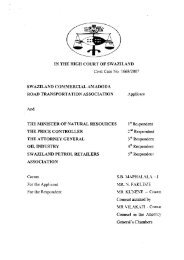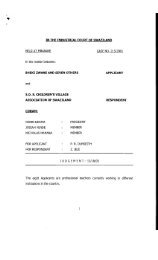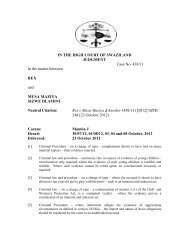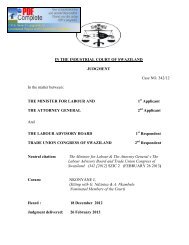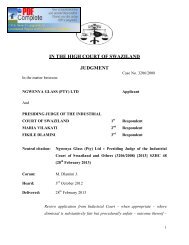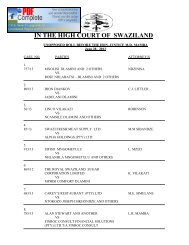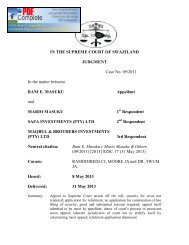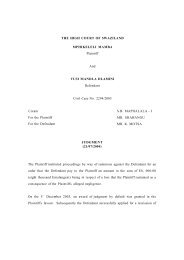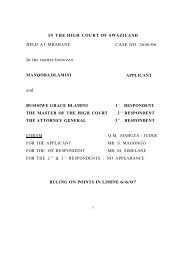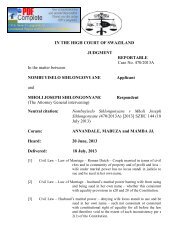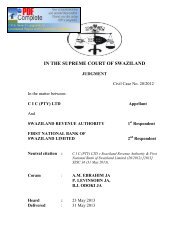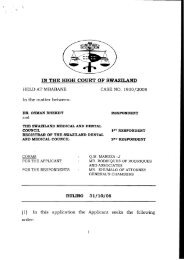MUZI COSTA KUNENE & 3 OTHERS V BUSISIWE T ... - SwaziLII
MUZI COSTA KUNENE & 3 OTHERS V BUSISIWE T ... - SwaziLII
MUZI COSTA KUNENE & 3 OTHERS V BUSISIWE T ... - SwaziLII
You also want an ePaper? Increase the reach of your titles
YUMPU automatically turns print PDFs into web optimized ePapers that Google loves.
[17] His Lordship M. C. B. Maphalala J. in Siphiwe Magagula v Lindiwe<br />
Mabuza 4577/08 at page 8 writes:<br />
“There are two forms of marriages recognized in Swaziland: it is the<br />
marriage by Swazi Law and Custom and marriage by civil rites”<br />
[18] Thandabantu Nhlapho, Marriage and Divorce in Swazi Law and<br />
Custom, page 75 writes:<br />
“…the characteristic features of Swazi marriage are libovu (red ochre),<br />
lobolo and procreation.”<br />
[19] M. C. B. Maphalala J. in the case of Siphiwe Magagula v Lindiwe<br />
Mabuza and Others 4577/08 at page 7 on the question on the procedure<br />
which constitute Swazi law and custom cites his Lordship Chief Justice<br />
Nathan in R. v Fakudze and Another 1970-1976 S. L. R. 422 at 423 as<br />
follows:<br />
“There are a number of ceremonies performed at the wedding, but the<br />
legally significant one is the anointing of the bride with red-ochre<br />
(libovu). Unless and until this has been done, she is not regarded as<br />
having been married.<br />
[20] The learned Judge continues to quote R. v Timothy Mabuza 1979-1981 S.<br />
L. R. 8 at 9:<br />
“…the smearing with red-ochre was an essential part of a Swazi marriage<br />
ceremony….. it is usually done outside the cattle byre but at the upper end<br />
of the cattle byre, that is immediately below the main hut….even if the<br />
smearing was not done at the proper place the person smeared in the<br />
8



